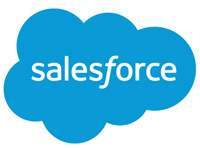
The other day Salesforce announced that it was integrating its philanthropic arm, the nonprofit Salesforce.org, into the larger organization, Salesforce.com. This makes a round trip for “the org” as it’s sometimes called. At its founding, Salesforce built its 1-1-1 model of philanthropy — donating 1 percent of its equity, product and employee time to communities around the world — into its core business.
As you can imagine, such an endeavor starts slowly but builds momentum over time. To date, Salesforce has donated more than 3.8 million hours of employee time and more than US$260 million in grants. A few years ago, Salesforce established the org as a public benefit corporation under California law.
That all went along swimmingly until the org developed its own vertical apps, including the Salesforce Philanthropy Cloud, Nonprofit Cloud, and Education Cloud. Voila, the org was in the software business. However, it might not have had all of the resources a software company would need, so merging seemed sensible.
Cultural Transformation
Salesforce has been playing both a long game and a short one for a long time. The short game is easily understandable — it sells seats of use to corporations. These include the company’s flagship CRM, partner apps, and development tools for those who want to roll their own apps. This makes perfect sense in the software business.
The longer game, which takes some explaining, is more about culture transfer. As the company has evolved, it has helped set standards for modern business. It has used what it built in an “eat your own dog food” way. That’s partly responsible for the Salesforce culture and it’s something the company is not shy about exporting.
Cloud computing is a good early example of culture transfer. The cloud commoditized computing and made it possible for businesses to get better and more reliable computing while also saving money. Today there’s virtually nothing you can do in your data center that you can’t do in the cloud, except maybe get hacked.
Cloud wasn’t the only innovation. There have been major inflections in social media and analytics, just to pick a couple. At each point, the company was selling more than software. It was teaching businesses new approaches and ways of doing business, and with that come culture changes.
Consider analytics and machine learning. Most of us will consider this just the latest new wrinkle in an industry that has had more than its share, but it has led to a culture change, which is what digital disruption is — learning to trust numbers over gut instinct.
Achieving the Right Balance
The thing is, they’ve been at this so long that Salesforce actually is addressing a new generation of customers and users now, and that’s why philanthropy, nonprofits and education are so important. It’s doubtful that any of the clouds from the org will generate serious income for businesses that use them. The real test of their value is in how they help businesses manage culture change.
There have been numerous studies linking a business’ philanthropic efforts with employee job satisfaction, and the younger the employee the more significant the effect. Philanthropy Cloud in particular has been instrumental in helping Salesforce to spread its 1-1-1 model around the business world.
For instance, well over two thousand businesses have adopted the model, and more are added weekly. Also, major players in the philanthropy world, like United Way, are big users and proponents, because the Philanthropy Cloud helps nonprofits extend their missions.
So, it’s not too surprising to me to see the two corporations coming back together. Increasingly it’s likely that the nonprofit/philanthropic/education solutions will have positive drag-on effects wherever the core technology goes.
This looks like one more culture change sponsored by Salesforce, and it might be the one with the most lasting power. Social techniques and analytics will be absorbed and blend into a company’s background, but this is different.
Nearly four decades ago, business thinkers decided that a company’s main and perhaps only responsibility was to the shareholders. Prior to that, there was a more nuanced view of stakeholders that included employees, customers, and the community at large, as well as shareholders. Perhaps this begins to rebalance that trend.























































Social Media
See all Social Media